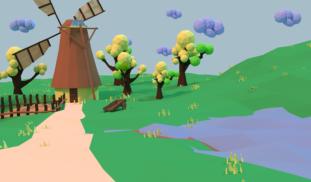Please wait...
About This Project
ViRVE is a proof-of-concept endeavor to model a modular, cheap, accessible VR creation lab that anyone can replicate. Help us create careful step-by-step instructions that will jumpstart humanists, artists, & community workers’ creation of virtual reality experiences. We believe that anyone can be taught to understand & work with cutting edge VR technologies— from teachers at every school level, to kids in community centers, to cultural creatives from all walks of life. Help us show you how!

Browse Other Projects on Experiment
Related Projects
VR for Virtually Everybody: Help us teach humanists and artists how to make virtual reality experiences
ViRVE is a proof-of-concept endeavor to model a modular, cheap, accessible VR creation lab that anyone can...
Designing touch surfaces to help the visually impaired operate home appliances
Many new ovens, dishwashers and other home appliances have flat, touch sensitive control panels instead...
Drawing Archaeology in Byzantine Athens
Gods and goddesses, gleaming temples, epic battles, heroes of legend – we’re all familiar with ancient Greece...



